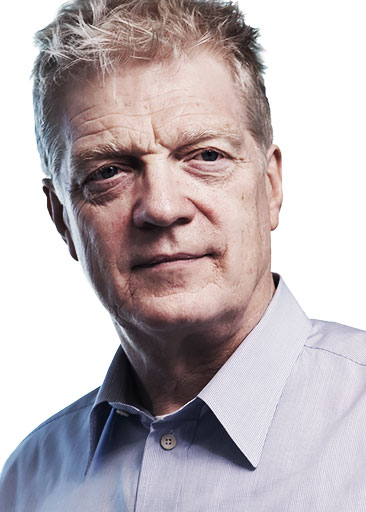Loading component...
At a glance
If there’s one thing Sir Ken Robinson wants us to know about creativity, it’s that it’s a skill we all possess.

“Creativity isn’t some exotic power that is given to just a few people,” the internationally renowned author and speaker tells INTHEBLACK ahead of his appearance at WCOA 2018. Creativity, argues Robinson, is a natural function of human intelligence that sets us apart from all other forms of life.
“It's the greatest gift that we have.”
In 2006, Robinson, an adviser on education to governments and not-for-profits, delivered an agenda-setting TED Talk titled Do schools kill creativity?, the most watched TED Talk of all time with 53 million views.
Creativity is “the process of having original ideas that have value,” he said in the speech, arguing that “we’re educating people out of their creative capacity” at the time when we need creativity the most.
Creativity is the wellspring of innovation, the primary driver of growth and productivity. The ability to innovate is fundamental to a company’s success, says Robinson.
“It’s the one sure way companies have of becoming flexible and adaptable, extending their own life cycles and being able to be responsive to change.”
A 2015 report by CEDA, Australia's future workforce?, estimates that 5 million jobs in Australia could be replaced by automation in the next 10 to 20 years. The jobs most likely to be automated are those that are low in social interaction, mobility and creativity, states the report, which identifies the latter as a “key future skillset”.
The question for organisations is how to innovate when their employees doubt their own creativity.
“Most people think they’re not very creative,” says Robinson. As children, we are creative without thinking, but this impulse becomes diminished in schools and learning institutions that prioritise conformity over creativity. “Our education system doesn't cultivate these talents in anything like the way that they should,” he says.
The good news is that creativity is a skill that can be acquired.
“It’s like learning to read,” says Robinson. In the right conditions, companies can cultivate the traits of imagination and creativity among their staff to boost innovation.
Creativity starts with culture
As companies mature, some become sclerotic and adopt a fixed mindset – both significant obstacles to innovation. Companies “become set in their ways,” says Robinson. “The leaders create an internal culture which is resistant to new ideas. Often, they become very separated internally.”
For a company to grow, its leaders must create a culture of possibility, says Robinson.
“The companies that survive best are the ones who cultivate a flexible internal culture, so they can deal with challenges they face outside.”
A thriving culture of innovation requires “that you approach innovation systematically and systemically,” he says.
“All companies have good ideas and plans, but if you look at the successes of companies like Apple or General Electric… they tend to be serial innovators. They tend to have an internal culture where innovation is at the centre of their interest, not something they hope will happen. They plan for it. They work towards it. They create systems where it will happen.”
To encourage creativity, start with the right skills
The next step is to provide staff with the training they need to develop their creative skills.
“It's not reasonable, I think, to expect people just to start being creative where they've not asked to be before,” says Robinson.
“If organisations are interested in innovation, then they ought to invest in cultivating the creative talents and dispositions of the people who work in them.”
Mindfulness programs have been shown to improve creative output, cognitive flexibility and problem-solving. In today’s fast-paced workplaces, mindfulness techniques offer “an opportunity to strengthen the creativity of our work teams,” write Ellen Keithline Byrne and Tojo Thatchenkery in the Harvard Business Review.
It's okay to fail
Innovation and failure are two sides of the same coin. “If you’re not prepared to be wrong, you’ll never come up with anything original,” Robinson memorably said in his 2006 TED Talk.
Creativity isn't some abstraction, he observes. “You can't be creative unless you do something. You can't be creative just by staring out the window.” Creativity involves a process of generating and testing ideas, some of which will inevitably fail.
To be open to failure, organisations need to foster a culture that is tolerant of risk.
“If people are penalised or vilified for making a mistake, they’re unlikely to take the sort of risks that are involved in genuine, creative work,” he says.
Diverse perspectives contribute to creativity
Innovation relies on cross-disciplinary communication within an organisation, says Robinson. “If companies become over stratified or they become too insulated internally, then that dynamic starts to slow down.”
Leaders should ensure there is “plenty of traffic” between different parts of an organisation, he says. “Generally speaking, it’s not wise to franchise out the creative part of the company’s work to one department. It isn’t something that just happens in design studios. It’s not something that happens in marketing or advertising. Creativity is a function of the whole organisation.”

